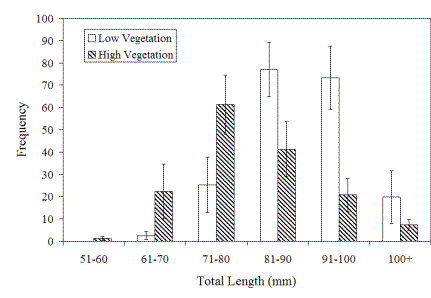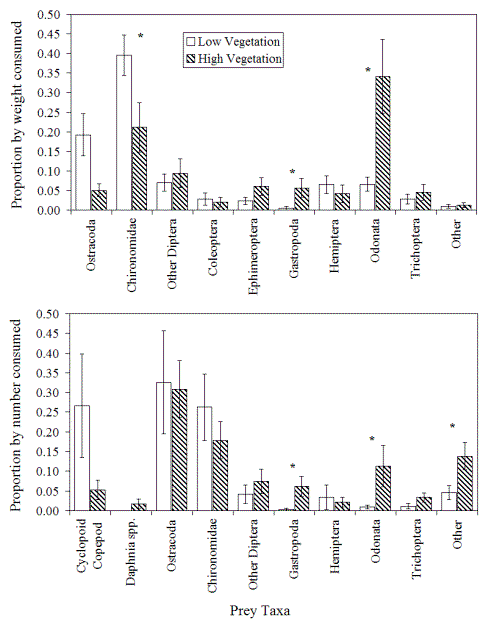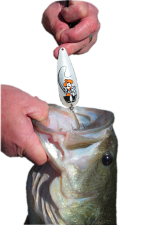The effect of vegetation density on juvenile bluegill diet and growth
Project personnel: Dan Shoup, Mike Nannini, Dave Wahl
Shoup, D.E., Nannini, M.A., and Wahl, D.H. The effect of vegetation density on juvenile bluegill diet and growth in the absence of fish predators. Journal of Freshwater Ecology 27:199-209.

Previous studies suggest that juvenile bluegill Lepomis macrochirus should optimally forage on zooplankton in open water, but that they often forage sub-optimally in dense vegetation to avoid predation risk. Others suggest that foraging in vegetation optimizes energy return due to the higher invertebrate densities associated with this habitat. Conclusions are confounded by the varying levels of pelagic predation risk and no research has addressed the effect of vegetation density on bluegill diet and growth when no fish predators are present and open water habitat is available.

We used 0.4-ha experimental ponds to evaluate the effects of vegetation density on bluegill diet and growth over a 3-month period. Low vegetation treatments were produced by adding grass carp Ctenopharyngodon idella (N=4), high vegetation treatments had caged grass carp as a control (N=4). Mean vegetation densities were 109 g/m2 (+ 21.0 SE) for the low density and 712 g/m2 (+ 54.3 SE) for the high-density treatments. Once vegetation was established, 15 kg of small (30-50 mm, TL) bluegill were added to each pond. By the end of the 3-month experiment, bluegill in the low vegetation treatment had grown 20% longer than the fish in the high vegetation treatment despite having similar mean stomach fullness. Bluegill in the high vegetation treatment ingested more gastropods and odonates and less benthic prey (chironomids) than did the fish in the low vegetation biomass treatment. Very little planktonic zooplankton were eaten by fish in either treatment despite the lack of predation risk in the open water habitat. These results suggest bluegill chose to forage in vegetated habitat even in the absence of predation risk, resulting in reduced growth.



